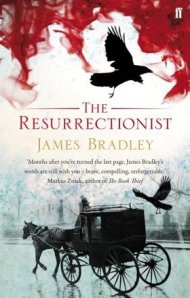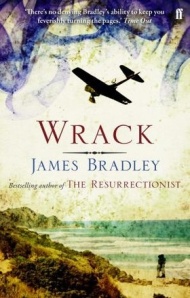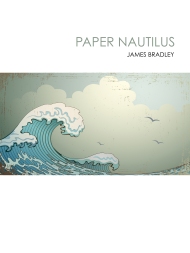Thomas Keneally, The Widow and her Hero
 In 1994, on Merapas Island, just south-east of Singapore, the bodies of two Allied soldiers were found. The two – Sgt Colin Cameron and Sub-Lieutenant James Riggs – had died almost 50 years earlier, on 4 November 1944, their lives lost fighting off a task force of Japanese soldiers.
In 1994, on Merapas Island, just south-east of Singapore, the bodies of two Allied soldiers were found. The two – Sgt Colin Cameron and Sub-Lieutenant James Riggs – had died almost 50 years earlier, on 4 November 1944, their lives lost fighting off a task force of Japanese soldiers.
Cameron and Riggs, both of whom were 21 at the time of their death, were the final unfinished chapter in the story of World War II’s least-known and most audacious operations, Rimau.
Modelled on the earlier and more successful Operation Jaywick, Rimau saw a small force of Allied commandos equipped with limpet mines and miniature submersibles commandeer a Malay junk and attempt to infiltrate Singapore Harbour
If successful, Rimau might well have struck a powerful psychological and strategic blow to the Japanese and their sense of security. But instead the mission came unstuck little more than an hour before it was due to begin. Just outside the entrance to the harbour a coastal patrol vessel crewed by Malay police approached the commandeered junk, presumably meaning to inspect it. With members who spoke local languages it’s just possible the encounter might not have been fatal to the mission, but as the patrol vessel approached one of the commandos – probably a British officer taken on board at the last moment – panicked, opening fire with his machine gun. In the ensuing exchange three of the patrol vessel’s crew of five were killed, the other two escaping to raise the alarm.
Their cover compromised, the mission’s commander, the magnetic and unorthodox Lieutenant Colonel Ivan Lyon, ordered the junk scuttled, and its cargo of mini-submersibles, or “Sleeping Beauties” destroyed. He then divided his force, sending the bulk of them back to await the submarine which was to collect them from Merapas, while he and six others went ahead and infiltrated the harbour using collapsible canoes.
In the hours that followed Lyon and his companions sank three enemy ships, but with the Japanese alerted to their presence their escape became instead a series of running battles in which thirteen of the commandos were killed and the remaining ten captured.
Rimau was not to end there though. The ten captured commandos were transported back to Singapore, where, in the months that followed, they were brutally interrogated, repeatedly tortured and, finally, put on trial for espionage and beheaded in July 1945, barely a month before the Japanese surrender.
In its outline, and in particular the fact of the survivors’ execution so close to the war’s end, Rimau embodies much of the mythological glamour we allow to shroud such events. Not so much tidying away the brutality of war as bathing it in the glow of doomed heroism, it echoes the increasingly free-floating Australian national myth of Gallipoli in its capacity to celebrate the human tragedy of war while simultaneously forestalling many of the more unsettling questions we might ask, not just about it in particular, but about the cost of war more generally.
It is precisely this veil Thomas Keneally seeks to pierce in The Widow and her Hero, which takes the events of Rimau and uses them as the basis for a larger exploration of the idea of heroism and the long-term effects of war on those left behind. At its centre is Leo Waterhouse, a young Australian officer attached to a group called the Independent Reconnaissance Department. During training for a mission to occupied Rabaul he is teamed with Major Charlie Doucette, one of the only remaining members of a regiment of Royal Ulster Fusiliers routed during the fall of Singapore. A long-distance sailor, old Asia hand and one of the few who foresaw the chink in Singapore’s armour before the Japanese attack, Doucette cuts precisely the sort of figure other men find irresistible. “Men in the know shook their heads, laughed and felt better when his name came up.”
But as the sarcasm of these words, and indeed the deliberate – and deliberately bitter – irony of the title suggest, The Widow and her Hero is not a novel which inhabits the perspective of other men. Instead its words are ostensibly those of Leo’s wife, Grace, for whom the legacies of her husband’s death are neither simple nor easily contained by the simplistic ideals of heroism which lie at the heart of the clubbily adolescent world inhabited by the Doucettes of the world.
Perhaps appropriately, the account Grace gives strains in several directions at once. Initially a means of bearing witness to Leo and what befell him, a document written for the benefit of Grace’s “somewhat bemused granddaughter, Rachel and for her daughters,” it grows in the writing to be something else, something larger, not just addressed “to a vaguer, more general audience,” but something which, in its increasingly naked pain and grief, seeks to tear down the altar on which men like Leo are too easily placed.
None of this is virgin territory for Keneally, who has long been interested not just in war and its many legacies, but by way individuals are captured and transformed by the processes of history. Whether in Season in Purgatory’s depiction of the experiences of Yugoslav partisans in World War II, or Gossip from the Forest’s fictional treatment of the Versailles negotiations, or even in his two best-known novels, Jimmy Blacksmith and Schindler’s Ark, he has repeatedly displayed a striking and often troubling ability to depict the vulnerability of the individual to larger processes and larger forces.
But Grace’s inability to resolve these contradictory impulses also makes her one of Keneally’s more remarkable creations; a grieving widow driven by her conscience to deny the purpose of her husband’s life, her mingling feelings of tenderness and bitterness captured eloquently in the sometimes awkward phrasing of her words, and the sharpness of observation she cannot always control. As she reflects at one point, “it’s longing and misery that are three-dimensional,” an observation which might easily apply to any of the many women left to reap the bitter harvest of male folly who populate Keneally’s fiction.
Set against Grace, Leo is an oddly incomplete picture. In part this is a function of his youth. “Leo Waterhouse was the most beautiful adult boy I have seen in my nearly ninety years of life on earth,” Grace writes close to the outset, describing he and his cousin Mel practising their newly acquired arts of combat as they tussled and fought, “both playful and serious” in her parents’ backyard, a description lent a curious poignancy by the ordinariness of the oleander bush Mel ends up in after one particular throw.
In a time when our images of war are mostly filtered through Hollywood, it’s salutary to be reminded the men whose deaths gave us our wartime narratives of sacrifice were, for the most part, little more than boys. To bear that fact in mind, as Grace – and by extension Keneally require us to – cannot help but make us imagine their deaths a little differently.
It’s also salutary, and not a little chilling, to be reminded of the cynicism and bad faith of those to whose care these young men’s lives are entrusted. Not the Doucettes, though as Grace admits, she came to hate Leo’s commander well enough, but the politicians and the generals.
In this regard Keneally is happy to peddle many of the stereotypes that still bedevil Australian thinking about our military history, from Blamey the drunk, to the priggish English and the self-interested and ultimately unreliable Americans. But alongside these stereotypes is another, more chilling portrait of the gulf between political rhetoric and reality. On a visit to Canberra after the war Grace and several of her fellow widows visit the office of the Minister for Defence in search of some official recognition of the sacrifice their husbands made. His walls “heartened” by pictures of bombers and aircraft carriers, the Minister seeks to deflect their request. But when Grace and the others will not be put off so easily he changes tack, insinuating their deaths may have been at their own hands. “Of course they had cyanide pills . . . Did you know that?” and gravely informing Grace and her companions their deaths had been covered up because they cracked under interrogation.
For Grace though, writing more than half a century after Leo’s death, the issue is not his youth, or even really his death, but the question of why he died. This question, once asked, cannot be contained. “[W]hat is so precious about the heroic impulse? Why do ordinary lusty boys love it better in the end than lust itself?” And beneath it all, another question, even more frightening. What was it for, in the end, all that pain, and all that death?
The unflinching clarity of this moral purpose has long given shape and purpose to Keneally’s fiction, and is what lifts it above narrow ideas of the political or historical novel. Without it the not inconsiderable number of his books which cleave close to historical fact would be little more than the faction Schindler’s Ark has sometimes been accused of being; works like Jimmy Blacksmith little more than grimly wrought naturalism.
It’s tempting of course to suggest this deeply moral vision is a function of Keneally’s early life as a seminarian. Patrick White infamously referred to him as that “rather revolting little bog-Irish almost priest”, before going on to observe, astutely enough, the tendency of Keneally’s fiction to lurch from moral grandeur to something far less exalted, and a younger and angrier Keneally has himself written about his experiences in the priesthood in thinly-disguised terms in books like Three Cheers for the Paraclete.
But seductive as this sort of reductive psychologising is, it cannot help but do violence to the deeply complex moral dramas Keneally’s fiction enacts. His vision is too deep and too broad to be confined by labels as narrow as Catholic, closer in spirit to the nineteenth century than the tortured doubts of Graham Greene.
In his native Australia this distinction is made the more difficult to preserve by the very visible connections between the obsessions of Keneally the public figure and the inner worlds of his fiction. When Keneally agitates on behalf of refugees in detention and then writes a book like The Tyrant’s Novel which borrows heavily from the experiences of one particular refugee, the problem is almost intractable, the fact of one obscuring the imaginative life of the other.
In narrative terms, the tension between a vision as uncompromising as Keneally’s and the dramas which animate fiction is never an easy one to resolve, often driving the action of his novels towards resolutions which demand, as Jimmy Blacksmith does, the sacrifice of the character at their centre. And indeed in The Widow and her Hero Leo and his fellow survivors are sacrificed, beaten, tortured, illegally tried and finally, clumsily executed and cast into pits as little more than meat.
There is little that is surprising in the depiction of this sad and squalid process, not least because much of the detail is filtered through Leo, his words preserved on toilet paper returned to Grace by the interpreter who facilitated the torture and trial of the survivors. Leo and his companions go to their deaths stoically, borne up by the stereotypes they are fated to embody, reading Wodehouse to each other and performing The Devil’s Disciples like heroes in a story we already know by heart.
For Grace, left behind, this knowledge is, in its own way, too much to bear. Left to make sense of her memories, and the successive waves of revelation as historians and enthusiasts uncover new evidence of the detail of those last days, she comes to fear each new discovery, understanding even as she does that what she fears is that the Leo she remembers – the Leo she wants to remember – will be lost somehow.
In the end it is this that is the novel’s masterstroke. For even as she rages against the men who come to her seeking absolution for their part in the failures that abandoned Leo and the others to their deaths, Grace finds herself clinging to her memory of that beautiful boy in her parents’ yard, unwilling to the end to let it go, her grief made expansive and annihilating. “[T]he heroic pose is not designed for ultimate domesticity,” she writes in the final pages. “King and Country, Banzai, Blood and Fatherland, Semper Fidelis, Who Dares Wins. These are the mere trellises upon which men uncertain about their weakness grow their peculiar and imperfect intentions . . . Ulysses on his return found not a wife to charm but suitors to fight. Nothing is learned, and everything is learned.”
Originally published in The Times Literary Supplement, 30 March 2007.








